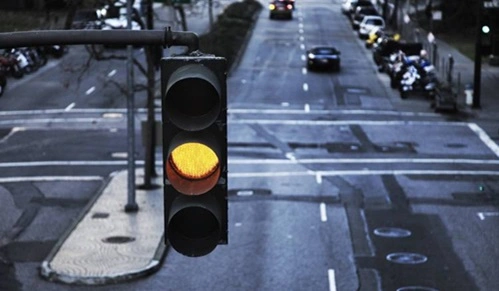No, it is not inherently illegal to run a yellow light in the United States, but it can result in a traffic violation if the driver fails to exercise proper caution or enters the intersection after the light turns red. The legality depends on state-specific traffic laws and the circumstances of the incident.
What Does a Yellow Light Mean?
A yellow traffic light signals drivers to proceed with caution because the light is about to turn red. It is intended as a warning rather than a directive to stop immediately. However, drivers must use their judgment and ensure they can safely clear the intersection before the light turns red.
Most state laws allow drivers to proceed through a yellow light under the following conditions:
1. Already in the Intersection:
If a vehicle is already in the intersection when the light turns yellow, it is legal to continue through.
2. Safe Clearance:
Drivers approaching a yellow light can legally proceed if they cannot safely stop before the intersection.
When Does Running a Yellow Light Become Illegal?
Although it is generally legal to drive through a yellow light, there are situations where it can lead to a traffic violation:
1. Entering the Intersection After the Light Turns Red:
If a driver enters the intersection after the light has turned red, it becomes a red-light violation.
2. Reckless or Dangerous Driving:
Speeding up excessively to “beat the light” or failing to yield to other traffic or pedestrians while the light is yellow can result in a citation for reckless driving or failure to yield.
State-by-State Variations
Traffic laws regarding yellow lights vary slightly across states. Here are some examples:
1. California:
- Under Vehicle Code 21452, drivers can legally proceed through a yellow light but must not enter the intersection after the light turns red. However, accelerating unsafely to beat the light can result in a citation for reckless driving.
2. Texas:
- State law allows drivers to enter an intersection during a yellow light but emphasizes stopping if it is safe to do so.
3. Florida:
- Drivers must slow down and proceed with caution at a yellow light. Failing to stop when safe can lead to a citation, especially if it results in a near-collision or other unsafe conditions.
Red-Light Cameras and Yellow Lights
Red-light cameras, installed at intersections across many states, can complicate the issue of yellow lights. These automated systems often trigger if a driver enters the intersection after the light turns red, leading to tickets even in situations where the light was yellow when the driver approached.
Controversies Over Red-Light Cameras:
- Many drivers argue that yellow light durations are sometimes too short, making it difficult to stop safely.
- Some states, such as California and New York, have minimum yellow light durations to ensure fairness in traffic enforcement.
Penalties for Violations
While running a yellow light is not typically illegal, violations related to yellow lights can carry penalties, including:
- Fines: Depending on the state, red-light violations can result in fines ranging from $50 to $500.
- Points on Driving Record: Many states assign points for red-light violations, which can lead to higher insurance premiums.
- Traffic School: Some states allow drivers to attend traffic school to remove points or reduce fines.
Recent Cases and Updates
1. California, 2023:
A study found that intersections with short yellow light durations were more likely to result in red-light camera tickets, prompting calls for uniform standards on yellow light timing.
2. Texas, 2024:
Police emphasized the importance of driver caution after several accidents occurred due to vehicles speeding through yellow lights, leading to increased enforcement at intersections.
3. Florida, 2024:
Lawmakers proposed requiring red-light cameras to display the yellow light duration on tickets to ensure transparency.
Tips for Drivers
To avoid potential violations and ensure safety:
1. Slow Down at Yellow Lights:
Approach with caution and be prepared to stop if it is safe to do so.
2. Familiarize Yourself with Local Laws:
Understand your state’s rules regarding yellow lights to avoid unnecessary fines or disputes.
3. Avoid Accelerating:
Do not speed up to “beat the light,” as this increases the risk of accidents and tickets.
Common FAQs
Q1. Is it always legal to run a yellow light?
Ans: No. While proceeding through a yellow light is not illegal, it can become a violation if the driver enters the intersection after the light turns red or if their actions are deemed unsafe.
Q2. Can I get a ticket for running a yellow light?
Ans: Yes, especially if a red-light camera or officer determines that you entered the intersection unsafely or after the light turned red.
Q3. What happens if I stop suddenly at a yellow light?
Ans: Sudden stops can lead to rear-end collisions and may be considered unsafe driving. Drivers are expected to stop gradually if it is safe to do so.
Q4. Are yellow light durations standardized across states?
Ans: No, yellow light durations vary by state and city. However, some states set minimum standards to ensure fairness.
Q5. Can I dispute a ticket for running a yellow light?
Ans: Yes. You can contest a ticket by providing evidence, such as dashcam footage, to show you entered the intersection legally.


